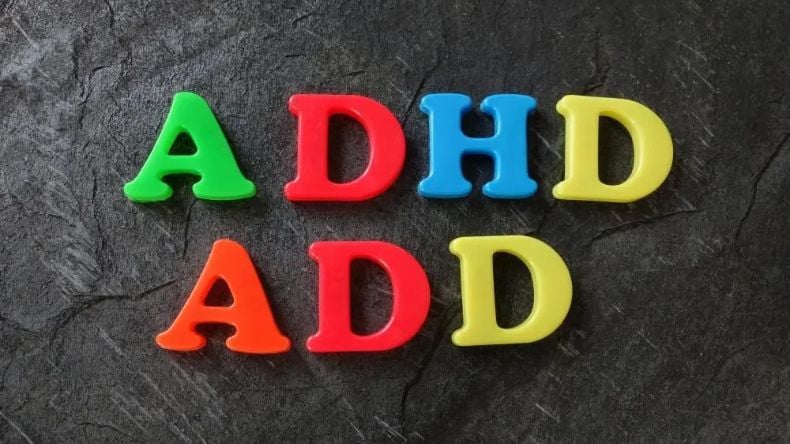
Understanding ADHD: From ADD to Contemporary Perspectives
The terms Attention Deficit Disorder (ADD) and Attention Deficit Hyperactivity Disorder (ADHD) have long been associated with neurobehavioral challenges, though their usage has evolved significantly.

Understanding ADHD: From ADD to Contemporary Perspectives
1. Introduction to ADHD and Historical Evolution
1.1 The Transition from ADD to ADHD
Historically, ADD was the primary label for individuals with predominant attention difficulties, while ADHD was introduced to encompass broader symptoms including hyperactivity and impulsivity. By the late 1980s, clinical guidelines (notably the DSM III-R and subsequent editions) standardized the terminology under ADHD, recognizing three subtypes: predominantly inattentive, predominantly hyperactive-impulsive, and combined type. The term ADD, though still used colloquially, is now considered outdated, reflecting a prior focus on attention deficits without explicit acknowledgment of hyperactivity or impulsivity.This conceptual shift mirrored advancing scientific understanding, emphasizing that attention deficits can coexist with or without hyperactive behaviors, all rooted in shared neural mechanisms affecting executive function—such as planning, task initiation, and emotional regulation.
2. Core Symptoms and Subtypes of ADHD
2.1 Predominant Symptoms Across Subtypes
ADHD is characterized by persistent patterns of inattention, hyperactivity, or impulsivity that interfere with daily functioning. For the inattentive subtype (formerly ADD), key symptoms include difficulty sustaining focus, forgetfulness in routine tasks, disorganization, and distractibility by irrelevant stimuli. Individuals may overlook details, struggle to follow instructions, or avoid tasks requiring sustained mental effort.In contrast, the hyperactive-impulsive subtype involves excessive motor activity (e.g., fidgeting, interrupting others, difficulty staying seated) and impulsive decision-making, such as blurting out answers prematurely or struggling with delayed gratification. The combined subtype presents a mix of both symptom clusters.
2.2 Developmental and Gender Differences
Symptoms often emerge in early childhood, with hyperactive behaviors more noticeable in boys (leading to earlier diagnosis), while girls tend to exhibit the inattentive subtype, which is frequently underdiagnosed due to fewer outward disruptions. Symptoms may evolve over time; for example, hyperactivity may diminish in adolescence, but inattention and organizational challenges often persist into adulthood.
3. Diagnosis and Clinical Assessment
3.1 Diagnostic Criteria (DSM-5 Guidelines)
Diagnosis requires symptoms to persist for at least six months, manifest in multiple settings (e.g., school, home), and impair social or academic functioning. The DSM-5 outlines 17 symptoms across inattention (e.g., "often fails to give close attention to details") and hyperactivity-impulsivity (e.g., "often runs about or climbs in situations where it is inappropriate"). A minimum of six symptoms (five for adults) are needed, with considerations for age-appropriate behavior (e.g., a preschooler's restlessness is normal, but a teenager's inability to sit through a lecture may signal concern).
3.2 Assessment Tools
Clinicians use standardized tools like the SNAP-IV questionnaire, which evaluates symptom severity across attention, hyperactivity, and impulsivity domains. Psychological testing and behavioral observations are also critical, ruling out other conditions (e.g., anxiety, learning disorders) that may mimic ADHD symptoms.
4. Treatment Approaches: Integrating Pharmacological and Psychosocial Interventions
4.1 Pharmacological Therapies
Medication is often the first-line treatment, particularly for moderate-to-severe symptoms. Central nervous system stimulants (e.g., methylphenidate, amphetamines) enhance dopamine and norepinephrine activity, improving focus and reducing impulsivity. Non-stimulant options (e.g., atomoxetine, guanfacine) are prescribed for patients intolerant of stimulants, targeting norepinephrine reuptake to boost attention regulation. Treatment plans are highly individualized, with dose adjustments based on response and side effects (e.g., appetite suppression, sleep disturbances).
4.2 Psychosocial and Behavioral Interventions
Cognitive-Behavioral Therapy (CBT) helps individuals develop strategies to manage time, set goals, and improve organizational skills. For children, parent training programs teach behavior management techniques (e.g., reward systems, clear communication of expectations). School-based interventions, such as academic accommodations (e.g., extended test time, reduced distractions), are vital for educational success. Family therapy may also address relational stressors exacerbated by ADHD symptoms.
5. Misconceptions and Societal Implications
5.1 Debunking Myths
ADHD is often misunderstood as a result of poor discipline or laziness, ignoring its neurobiological basis. Research links it to genetic predispositions, brain structural differences (e.g., smaller prefrontal cortex volume), and neurotransmitter imbalances. It is not a "childhood-only" condition; up to 60% of affected children carry symptoms into adulthood, impacting career planning and interpersonal relationships.
5.2 Stigma and Access to Care
Stigma surrounding ADHD can delay diagnosis and treatment, particularly for adults who may have internalized shame about lifelong organizational struggles. Improved public awareness and inclusive clinical practices are essential to ensure timely intervention, as untreated ADHD is associated with higher risks of academic underachievement, substance misuse, and mental health comorbidities (e.g., anxiety, depression).
6. Conclusion
From the historical term ADD to the modern framework of ADHD, our understanding of this neurobehavioral condition has deepened, highlighting its diverse presentations and complex underpinnings. Early diagnosis, combined with tailored interventions—ranging from medications to behavioral therapies—offers significant promise for improving quality of life. As research progresses, ongoing efforts to reduce stigma and enhance access to evidence-based care remain critical in supporting individuals across the lifespan affected by ADHD.